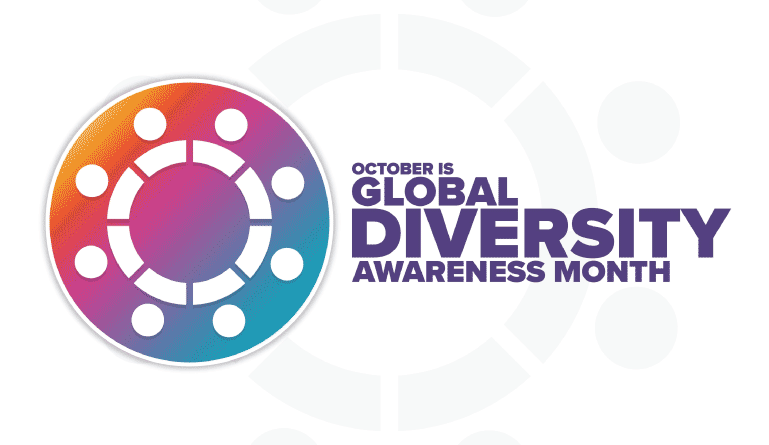Diversity, Equity, and Inclusion (DEI) have garnered increasing attention in contemporary workplaces. Companies prioritize DEI for ethical and social reasons and because a diverse workforce correlates with enhanced profitability, accelerated innovation, and long-term business resilience.
As an HR professional, your role in amplifying diversity awareness across the organization is pivotal. In recognition of Diversity Awareness Month (October), let’s delve into practical ways to utilize technology in promoting DEI in the workplace.
The Evolving Relationship Between HR and DEI Awareness
Historically, HR was perceived as the sole proprietor of diversity and inclusion initiatives, often with limited quantifiable mechanisms to track progress. Only recently have diversity, inclusion, and eradicating discrimination in professional environments become top organizational priorities.
Policy changes have nudged organizations towards positive trajectories. For instance, the European Parliament’s Pay Transparency Directive in March 2023 mandated companies to achieve and demonstrate pay equity. Similarly, Australia amended its Fair Work Act, limiting pay secrecy clauses and bolstering anti-discrimination and sexual harassment protections.
In response, the HR technology sector has introduced innovative solutions that actively foster workplace diversity, moving beyond mere lip service towards achieving tangible, quantifiable goals. Compliance is now largely seen as a baseline, with a heightened focus on the business imperative of constructing an inclusive workplace that welcomes and supports employees from diverse backgrounds.
How HR Technology Can Improve DEI Awareness
October is dedicated to discussions around diversity and how each organization can contribute to building a fairer and more equitable workforce. Here are several tips to foster DEI conversations this month and throughout the year:
- Inclusive Job Posts with Talent Acquisition Tools: Utilize talent acquisition tools to initiate DEI initiatives by identifying gendered language, unconscious bias, and wage transparency discrepancies in job descriptions. Some even use artificial intelligence (AI) to predict which statements might be construed as showing a preference for certain genders or races and automatically generate smarter alternatives to replace them.
- Incorporate Minority Group Factors into Employee Engagement Surveys: Understand employee satisfaction and identify patterns within specific demographics or age groups through employee engagement surveys.
- Empower Teams and Facilitate Self-Expression through the Intranet: Use the organization’s intranet or a social employee engagement tool to amplify diverse voices and identify team diversity champions. Conduct anonymous polls around topical DEI issues to bring such matters to the forefront and position your company as a safe space.
- Include Diversity Parameters in Your Annual HR Health Check: Add diversity parameters to your annual HR health check to evaluate the success of your HR efforts.
- Adopt Hybrid-Ready Employee Management Tools: Implement technology solutions such as online collaboration systems and remote attendance tools to facilitate flexible working patterns. Technology solutions like online collaboration systems, remote attendance tools, employee self-service, etc., can help your teams find work patterns most suitable for them and their unique social, economic, and cultural backgrounds.
- Offer Diversity Training through L&D Modules: Utilize Learning and Development (L&D) systems to roll out mandatory courses such as anti-discrimination and anti-harassment training.
Navigating Pushback to DEI Efforts
As we strive to promote DEI in the workplace during Diversity Awareness Month and throughout the year, it’s vital to acknowledge the challenges HR faces in implementing and enforcing DEI programs. Gartner’s 2022 survey found that 42% of employees believe their peers resent DEI efforts in the workplace, and a similar number view their organization’s DEI efforts as divisive.
Addressing resistance begins with identifying it and can take forms such as denial, disengagement, and derailment into other talking points. To mitigate these risks and maximize DEI program outcomes, communicate the buy-in obtained from C-level stakeholders, build and actively hone empathy skills, and utilize your intranet and employee engagement platforms to invite workforce participation in DEI efforts.
In Summary: Diversity Awareness Month Should Be Every Month
While October provides a prime opportunity to discuss and reinforce the importance of DEI in the workplace, HR teams are uniquely positioned to effect positive change in their organization’s operations, hiring, support, and promotion of people. HR technology tools, coupled with a strategic long-term plan, enable you to quantify your DEI awareness goals, integrate them into business operations, and measure progress over time.
For additional insights, explore the best diversity hiring practices and discover 20 ways to enhance diversity in the workplace.







